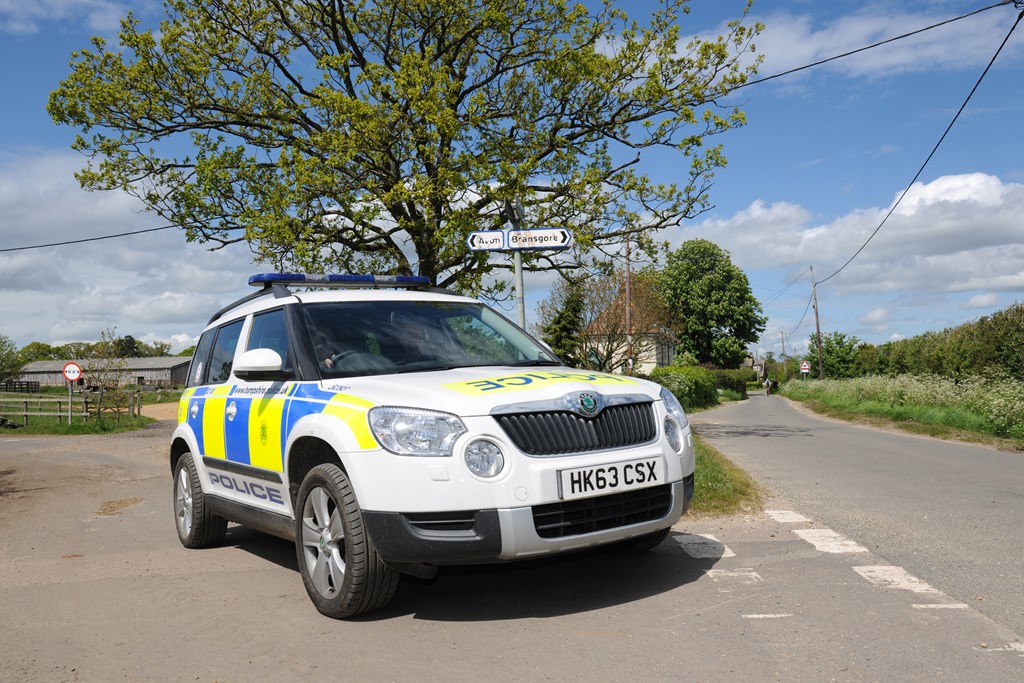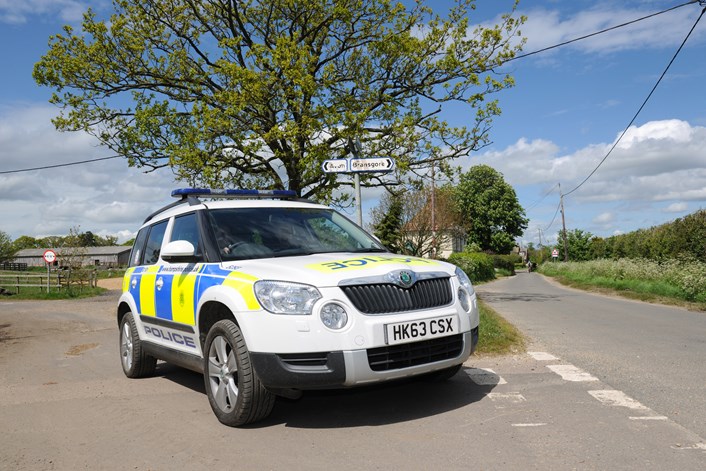
27 Jul 2020
Analysis of Coronavirus fines published
Analysis of Fixed Penalty Notices (FPNs) issued by police under the Coronavirus (Covid-19) regulations shows a low overall rate in fines issued across England and Wales with young men receiving the biggest proportion. It also shows black, Asian and minority ethnic people were issued with a FPN at a rate of 1.6 times higher than white people.
The analysis, undertaken by staff from the Government Statistical Service, used police force data from English and Welsh forces for the number of FPNs issued between 27 March and 25 May for breaching public health regulations introduced by Government to help prevent the spread of Covid-19. These powers came into effect on 27 March 2020.
The National Police Chiefs’ Council (NPCC) and the College of Policing issued guidance to forces on how to implement the new regulations. This made clear that enforcement was only to be used as a last resort, when attempts to engage with individuals to explain the regulations and encourage compliance had not been successful.
The analysis examines rates of FPNs issued on two different bases: force area where the individual was present when issued the fine, and the force area where the individual issued the fine was normally resident.
The number of FPNs issued was relatively low – 17,039 in total and a rate across all of England and Wales equivalent to 3 per 10,000 resident population.
To put these figures into context, in the four weeks to 24 May, police recorded 134,188 incidents related to Covid-19. This will include a wide range of incidents including cases when officers proactively offered advice to people, responded to reports from the members of the public alleging breaches of the regulations by others and offences where criminals have sought to take advantage of the pandemic. This under-counts the actual number of interactions with members of the public related to the policing of the public health regulations as it only captures those that require recording on force incident management systems and will not include advice proactively given by officers to members of the public while on patrol.
The national level analysis showed:
- Men, especially those under 45 years-old, were disproportionately represented in those given an FPN – 70 per cent of FPNs issued went to men under 45 when they comprise 22 per cent of the population.
- This was most evident for young men aged 18-34 years old who make up 14 per cent of the resident population but accounted for 57 per cent of those issued with an FPN, a rate some four times higher than would be expected if FPNs were issued proportionately across all age-groups.
- The number of FPNs issued to all black, Asian and minority ethnic people (BAME) across all of England and Wales was at a rate of 4.0 per 10,000 population. This compared with 2.5 per 10,000 population for people who identified as white. Rates per 10,000 were highest for Asian (4.7) and black people (4.6), followed by mixed (3.1) and other minority ethnic people (2.6).
- Expressed as a disparity rate (i.e. the rates per 10,000 BAME people as a ratio of the rates per 10,000 White people) showed that it was 1.6 times higher for BAME people than white people. Disparity rates were higher than the BAME average for Asian and black people (both 1.8 times higher than white people). Those people in the mixed ethnic group experienced a rate 1.2 times higher than white people, while those from the other ethnic minority groups had the same rate as for white people.
- Young men (aged 18-24 and 25-34) from BAME backgrounds were over-represented by around twice the rate of young white men in the same age-groups. In contrast, young women (18-24) from a white background had similar levels of representation (among those issued with FPNs) as their representation in the general population whereas women of the same age from a BAME background were slightly under-represented.
Police force area (PFA) level analysis showed:
- Considerable variation across force areas with the disparity rate ranging from 1 to 6.5 comparing all BAME people with white people. Rates were generally higher in those force areas that attract tourists to coastal areas and beauty spots. It was apparent that in such areas, FPNs issued to non-residents explained some of the disproportionality observed.
- This is an important factor to note when assessing disproportionality rates since these factors will also interact with ethnicity as such areas typically have relatively small resident BAME populations and thus a small number of FPNs issued in such areas to BAME people can lead to relatively high disparity rates.
- Disparity rates were found to be generally lower when rates were calculated on the basis of where the individual was usually resident. The upper range of the disparity rates fell from 6.5 to 4.6 and the lower end from 1 to 0.3.
- The small number of FPNs issued and the relatively small size of the resident BAME population in some force areas can produce large differences in rates per 10,000 population, which are the result of a very small difference in the absolute numbers. This is particularly so for specific ethnic groups within the BAME population and careful interpretation of the comparative rates is required.
- There were 20 forces that each issued less than 40 FPNs in total to BAME people, which is much less than one FPN to a BAME person across the entire force per day in each of these areas.
- One police force issued FPNs at a rate of 30 per 10,000 to black individuals. However, because of the small number of black residents of the force area this was the product of only three FPNs issued to black people. If one less, or one more, FPN had been issued to a black person in that county this would have changed the rate from 30 per 10,000 to 20 and 40 per 10,000 respectively indicating how sensitive the rates are to small changes in such areas.
National Police Chiefs’ Council Chair Martin Hewitt, said:
“This analysis enables individual chief constables to better interrogate and understand the data in their local context. It also enables communities to scrutinise the data and ask questions of their local police.
“The number of FPNs issued overall is low reflecting our approach of enforcing only as a last resort. It is also important to recognise that this data presents only a partial picture as it does not show the hundreds of thousands of interactions with the public where engagement, explanation and encouragement was effective and there was no need to issue a fine. Those who were given a fine did not follow the regulations that millions of others were abiding by, which were there to control the spread of a deadly virus, protect the NHS and save lives.
“Of the relatively small group who were issued with an FPN, there are disparities across gender, age and ethnicity – with young men most disproportionately represented against the population.
“The analysis in this report is complex and needs be interpreted carefully – the data available makes drawing definitive conclusions about disproportionality challenging and comparisons between forces are difficult due to their varying local contexts.
“Real caution in interpretation of local disparity rates is required given the small numbers involved in some force areas. In just under half of forces there were fewer than 40 FPNs in total issued to black, Asian or minority ethnic people – much less than one FPN a day over the two month period across each force area. Additionally the national analysis is based on a whole force area and doesn’t take account of the very local demographics in that area.
“Rural and coastal forces that attract tourists issued significantly more FPNs to non-residents, which has significantly affected the level of disparity between white and people from black, Asian and other minority ethnic backgrounds compared with other forces who issued fewer relatively to non-residents.
“For a number of forces, continued focus on crime and violence could affect their disparity rate as areas of that have been a focus of police activity are also areas with a higher concentration of black, Asian and minority ethnic people, which also increases the possibility of officers identifying and dealing with breaches during those deployments.
“In communities or groups with lower trust in police, attempts to encourage before enforcing may be less successful.
“While it is a complex picture, it is a concern to see disparity between white and black, Asian or ethnic minority people. Each force will be looking at this carefully to assess and mitigate any risks of bias – conscious or unconscious – and to minimise disproportionate impact wherever possible. Many forces have brought in community representatives to help them scrutinise the circumstances around each FPN and if it has been issued fairly.
“We are working to develop a plan of action to address issues of inclusion and race equality that still exist in policing - like the lower trust in us from black communities, their concerns about use of powers like stop and search and the concerns from people of colour within policing about inclusivity and equality at work. The findings of this analysis will be further considered as part of that work.”
The report describes the limitations of the data-set and challenges of drawing conclusions from the analysis including:
- The analysis uses a number of methodologies to seek to measure disproportionality. Each approach provides a different perspective but there is no single measure which would provide the precise level of disproportionality in the policing of these new regulations.
- Each method is inferior to direct analysis of the volume of people acting in contravention of regulations or those that came to the attention of police, which would enable an assessment of whether people from different ethnic backgrounds were treated differently by police.
- The report cannot explain disproportionality. It says: “Disproportionality could legitimately result from the fair application of the regulations when sub-groups differ in their observance of the regulations. Or it could result from an uneven enforcement by the police of the regulations across different sub-groups of the population.”
- Comparisons at PFA level need to be made with caution since force areas differ significantly in terms of the size, structure, composition and density of their resident population, geographic nature, levels of crime, police resources and so on.
- The wide variation in the number and rates of FPNs issued at PFA level affects the national averages across the data-set.
- For those forces with higher levels of missing ethnicity data, the analysts can be less confident in the findings at force level.
Contact information
Communications office
By phone: 0800 538 5058
By email: press.office@npcc.police.uk



